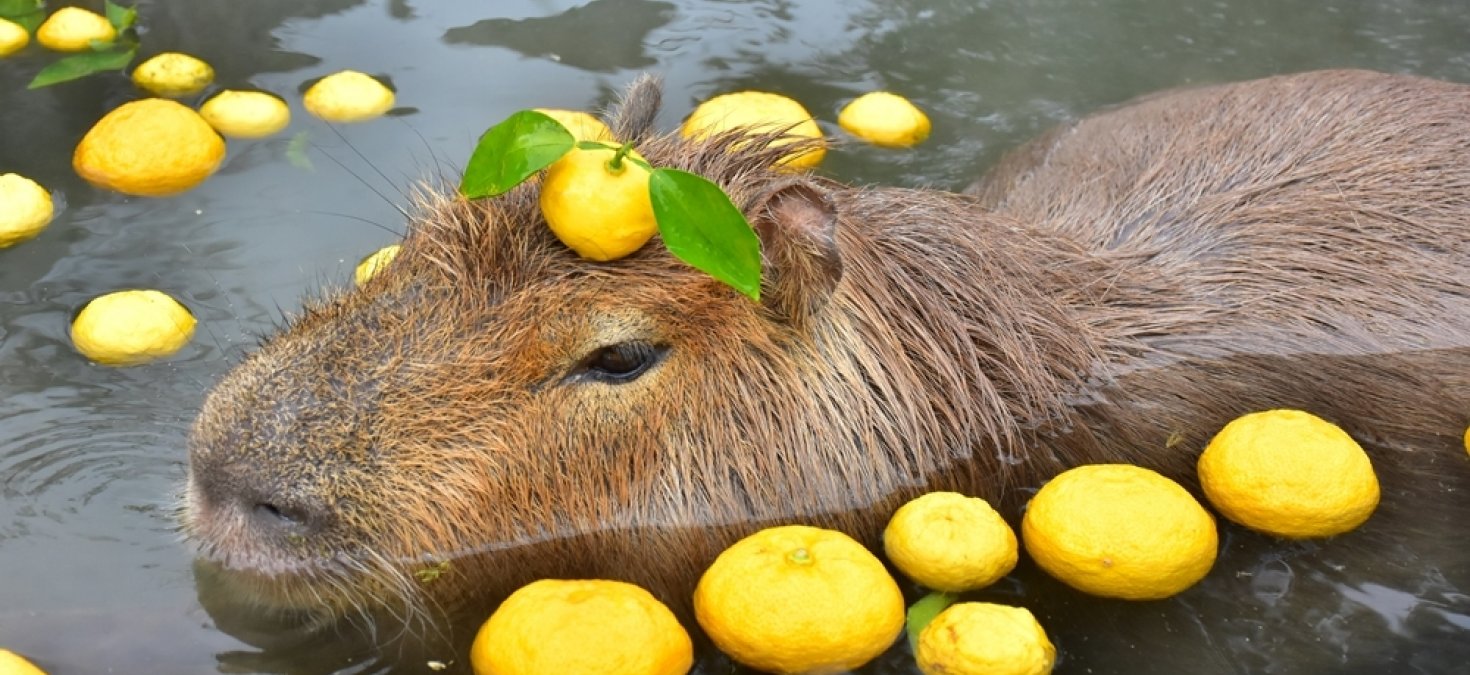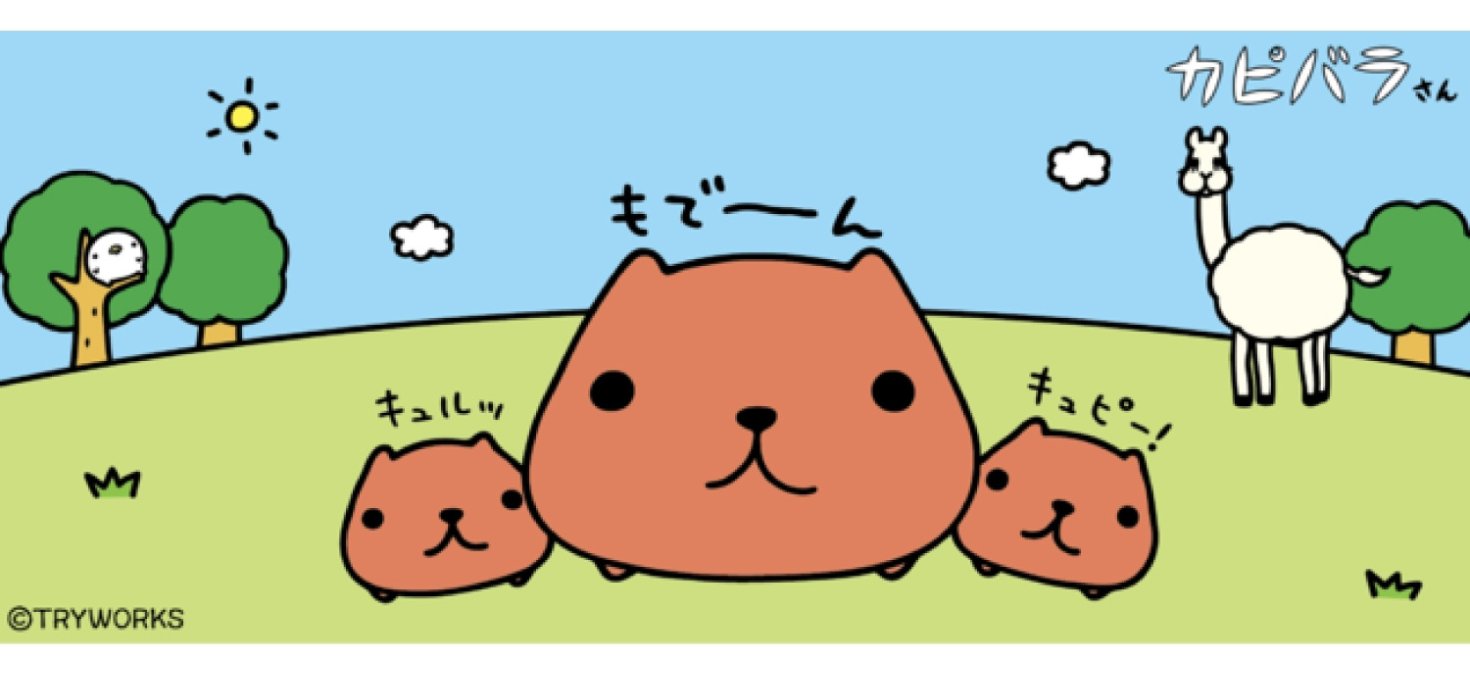Touji and Capybaras

By Michael Darin, Education and Engagement Coordinator
Touji (冬至), the Winter Solstice, occurs around December 22nd each year in Japan. Meaning “the extremity of winter” in Japanese, this auspicious day originated as the beginning of the New Year for many ancient societies.
In the Northern Hemisphere, this is the time of year with short days and long, dark nights. Fears of food shortages during this barren time were often associated with touji, and thus, believed to be the day of the year closest to death. Rituals were designed to ward away evil, to warm and nourish one’s self, and to pray for good health.
Eating round, brightly colored foods like pumpkin and squash, or touji-gayu, a rice porridge made with adzuki beans, provided warmth and nourishment and reminded them of the bountiful summer crop. Consuming food that had “n” in the name such as ninjin (carrot), daikon (Japanese white radish), udon (thick white noodles), or ginnan (ginkgo nut) brought good luck.
But surely, the most common touji custom of all is soaking in a tub of hot water containing yuzu citrus fruit. Yuzu, lemon’s super sour and tart cousin, has a refreshing fragrance that is believed to banish evil. Literally thousands of Japanese lazily float amongst the fruit on this day to warm up, improve circulation, provide relaxation and well-being at a time when it’s most needed. Some even plant trees in their yard just to have them for this special day.
But now, maybe even more popular than humans bathing in yuzu, is the pleasure of watching the world’s largest rodent, the capybara, do it. So how exactly did an animal from so far away become a bathing superstar in Japan?
Native to South America, capybaras arrived in Japan during the 1960’s. These large, furry animals were extremely social, gentle towards humans and easily tamed, making them popular in interactive exhibits around the country. In 1982, quite by accident, a zookeeper at the Izu Shaboten Zoo in Shizuoka prefecture discovered that capybaras absolutely loved soaking in hot water, and the practice of providing them an onsen, or traditional Japanese hot springs, was born.
The love of watching these easy-going animals doing almost anything has bloomed into a national pastime, even inspiring a new Japanese character, Kapibara-san, who’s adorable face can be seen all over Japan.

Capybaras with their blunt snout, gentle eyes and tiny ears exude a sense of nonchalance and seem to care less about anything other than just being in the moment. Their almost-too-big-to-be-true size adds to their cuteness when eating, sleeping or thoroughly enjoying a hot bath.
Maybe it’s because the Japanese take rules and work very seriously that the vision of this adorable creature relaxing almost trancelike has found its way into the hearts and spirit of a nation. Fighting their heavy eyelids, yuzu soaking capybaras seem to be enjoying a level of euphoria many of us can only wish for. After all that hard work, who doesn’t dream of a good ol’ laze to start the New Year?
Cover photo by: petcapybara.com
